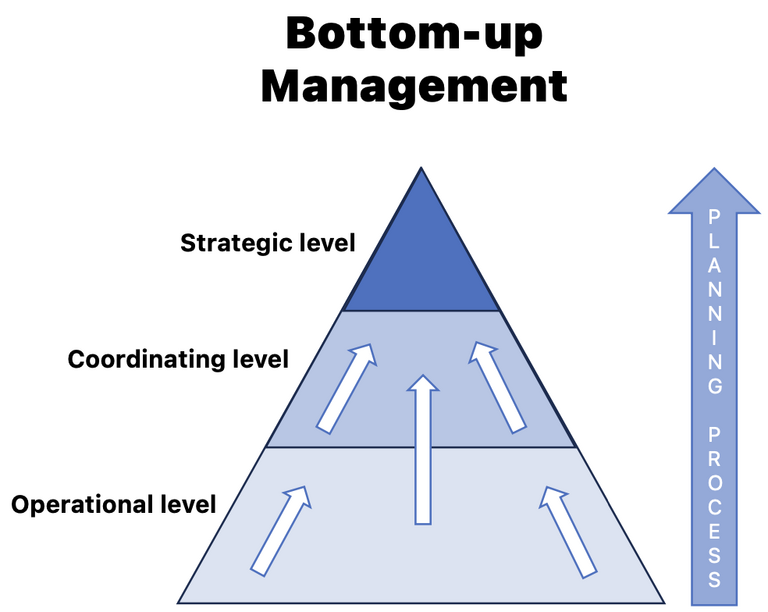What Is Meant By Bottom-up Management?

Bottom-up management is a management approach in which the employees of an organization are actively involved in the decision-making process. It contrasts with traditional top-down management, in which decisions are passed down from the executive level. Bottom-up management allows employees to contribute their ideas, experiences, and suggestions, thereby promoting organizational growth and efficiency.
Employees develop their own goals and strategies in collaboration with colleagues and supervisors to achieve the overall goals of the organization. They have autonomy and responsibility in implementing their tasks and projects. Regular meetings and collaborative decision-making are important.
Reporting in bottom-up management serves to make progress, results and challenges transparent. Employees regularly report on their activities, projects and successes. These reports are reviewed by supervisors and other relevant stakeholders. Reporting enables senior management to gain a comprehensive overview of employee activities and reallocate resources or offer support when necessary. It also promotes knowledge sharing and a learning culture within the organization.
Bottom-up management encourages employee participation, motivation, adaptability and collaboration. It also enables more innovative solutions and leveraging of employee expertise. But it necessitates clear communication, a clear framework, and a balance between autonomy and control. It also requires trust from leadership and continuous adaptation.
Bottom-up management is a dynamic process that can vary from organization to organization. There is no one-size-fits-all solution, and it requires continuous adaptation and improvement to reap the full benefits.

